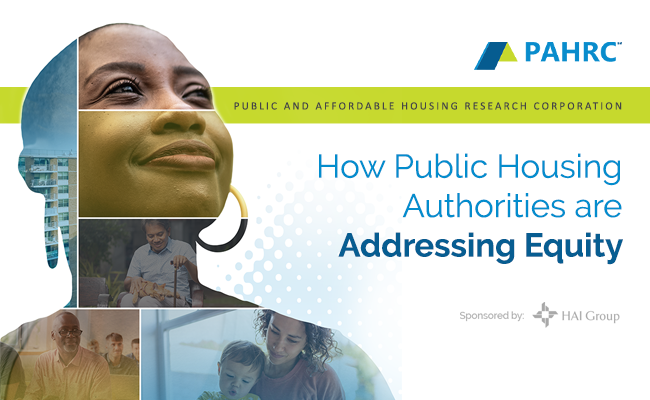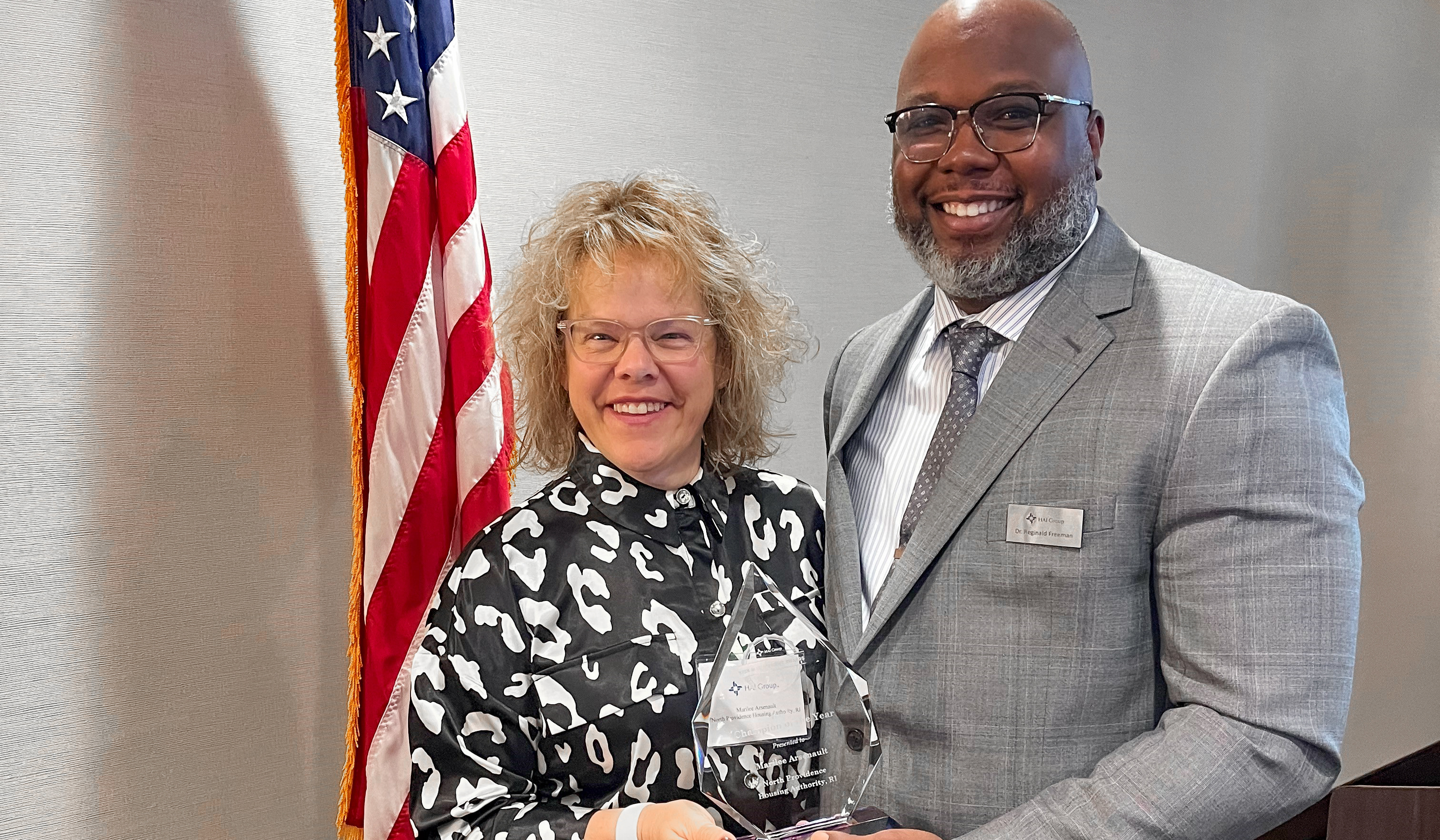Public housing authorities (PHAs) have an obligation to affirmatively further fair housing by combatting discrimination and taking steps to create safe and inclusive communities.
The need to address inequity in housing stems from historic discriminatory laws and policies that still impact the lives of those affected today. Between redlining, which explicitly prevented households of color, particularly Black households, from obtaining loans to purchase houses, restrictive covenants that prevented homes from being sold and resold to people of color, and even Black veterans getting denied loans that they had a right to receive through their G.I. Bills, and more, there was no shortage of programs, policies, and practices that worked against fair and equitable housing. Black individuals and families were also denied access to public housing built in white neighborhoods due to these discriminatory laws and policies. The effects of such efforts still exist today, with residents of historically redlined neighborhoods, where public housing is often located, facing worse environmental conditions and increased risks of disparate health outcomes. PHAs placing equity at the center of their organization will further fair housing and help decrease disparities across races.
The Public and Affordable Housing Research Corporation (PAHRC) interviewed 16 PHAs about their policies, programs, and practices to advance equity and their advice for small PHAs interested in implementing similar initiatives in their upcoming report, “PHA Pathways for Advancing Equity.” Are you a small PHA looking to expand equity at your organization? Consider the following advice described in the report.
Establish policies that center equity
 Creating criminal screening policies that promote rehabilitation and centering procurement policies that lead to vendor diversity are just a few examples of how small PHAs can keep equity in mind when establishing policies in their organization.
Creating criminal screening policies that promote rehabilitation and centering procurement policies that lead to vendor diversity are just a few examples of how small PHAs can keep equity in mind when establishing policies in their organization.
Opportunity Home (TX) in San Antonio implemented a tiered rubric in their criminal screening policy, allowing more flexibility and compassion in their housing decisions. Another shared how they examined their procurement policy, redesigning it to promote vendor diversity. Redesigning policies through a lens of equity may be more feasible than establishing programs under resource constraints.
Turn partnerships into programs
While funding restraints can make it challenging for small PHAs to establish deep equity-based programs, policies, and practices, partnerships can expand capacity for these initiatives. When developing these relationships, it is essential to start by educating potential partners on your PHA's role in the community—what do you bring to the table? By first educating potential partners, you lay a stable foundation for expanding the relationship in the future.
Need help knowing where to start? Consider these options when developing partnerships:
- Libraries can help establish workshops focused on digital education and more.
- Nonprofits often have similar goals to PHAs; consider collaborating to prevent duplication of efforts and combine resources.
- Healthcare organizations are good partners for health initiatives. Something as simple as wellness workshops may make a difference in your community.
- Companies looking to give back often want to invest resources in their local community. One PHA we interviewed had its garden sponsored by a private business, allowing it to create an accessible space that provides food to all community members.
Many PHAs mentioned getting involved in local community groups to build relationships they can lean on when they need a partner or face funding constraints.
Implement housing-driven strategies
Small PHAs can look toward developing housing-driven equity strategies as they continue to operate and expand. Strategies may include expanding their community into neighborhoods with greater opportunities or directing funding towards properties in formerly redlined zones. Small PHAs can also do cost-effective local outreach, encouraging landlords in the area to accept housing choice vouchers.
Burlington (VT) Housing Authority got creative when establishing their offender reentry program by conducting outreach, locating landlords willing to rent formerly incarcerated individuals, and assisting residents in resolving landlord disputes by referring them to local agencies if they needed security deposit and rent support.
Incorporate equity in training
Any PHA, small or large, can implement training. Staff and residents may have different lived experiences, creating hurdles in understanding resident needs and communicating effectively. By training staff on the challenges residents face and promoting equity in training, small PHAs can facilitate understanding and empathy, leading to equity-centered service.
Many PHAs we interviewed noted that they ensure staff are intentional in their language. For example, the Cuyahoga (OH) Metropolitan Housing Authority emphasized the importance of knowing that families come in many different shapes and sizes. This understanding helps create inclusivity for individuals and families in the LGBTQ+ community. For an additional resource, review the Citizens Housing & Planning Council’s LGBTQ+ Housing Plan.
For PHAs strained on resources, something as simple as group readings could effectively educate staff and align them with the mission. At Elm City (CT) Communities, a group read of Richard Rothstein’s “Color of Law” helped to understand the history of segregation in housing. This is a resource-friendly activity that puts equity at the center of the organization. Toolkits from the Housing Development Consortium and Government Alliance on Race & Equity can help support any PHA with training and equity development.
In addition to training on race and LGBTQ+, providing resources and guides to staff, such as reentry support resources from the National Housing Law Project, can help everyone at the organization better understand how to support previously incarcerated individuals.
Figure 1: Opportunities for Small PHAs to Build Equity into Their Strategic Plan

Consider quick wins
Starting small often creates a snowball effect, cascading into more changes over time. Here are some quick wins that may get the ball rolling:
- Have print material available in multiple languages.
- Ensure website images represent people of varying races, abilities, ethnicities, and locations.
- Draft forms that are accessible and readable to residents.
- Partner with local organizations trusted by underserved groups in their community to promote these materials and spread awareness about affordable housing opportunities.
- Hold resident meetings and hear what your residents say about their community, taking note of their feedback.
- When hiring new staff, hire staff that reflect the population.
- Participate in local working groups to integrate your organization further into the local community.
- Develop connections and find inspiration from industry peers.
 Gainesville (GA) Housing Authority promoted equity at its organization by curating art from North Georgia artists to display in the community building and installing a large mural highlighting the community's culture. Community-representative artwork can help build momentum for equity initiatives for small PHAs.
Gainesville (GA) Housing Authority promoted equity at its organization by curating art from North Georgia artists to display in the community building and installing a large mural highlighting the community's culture. Community-representative artwork can help build momentum for equity initiatives for small PHAs.
By centering equity, PHAs can continue their required work in expanding fair housing while improving the lives of their residents. While small PHAs may face additional challenges when expanding equity in their organization, there are tools and strategies they can use to make equity more achievable.
Small PHAs can leverage quick wins, community partners, resident feedback, accessible design, and more to engage in equity work across their organization.
Additional resources
The National Housing Law Project created the “Affirmatively Furthering Fair Housing Rule Guidebook” to help PHAs succeed in advancing fair housing. Read the guidebook here to learn more about what you can do to advance fair housing at your organization.
The Public and Affordable Housing Research Corporation (PAHRC) is the research entity of HAI Group, an insurer that has been exclusively serving public and affordable housing for more than 35 years. PAHRC’s work focuses on the impact that affordable homes bring to families and communities. In this guest blog, Cate Asp, PAHRC’s research analyst, dives into what small PHAs can do to promote equity in their organization. From quick wins to rethinking criminal background screenings, this blog highlights strategies of all shapes and sizes for fostering equity and furthering fair housing.
Interested in receiving PAHRC’s latest report, “PHA Pathways for Advancing Equity,” when it’s released? Be sure to sign up for email notifications.
This article is for general information only. HAI Group makes no representation or warranty about the accuracy or applicability of this information for any particular use or circumstance. Your use of this information is at your own discretion and risk. HAI Group and any author or contributor identified herein assume no responsibility for your use of this information. You should consult with your attorney or subject matter advisor before adopting any risk management strategy or policy.







